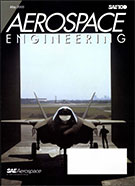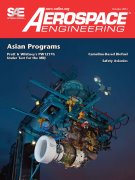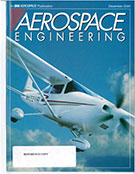Magazine

Aerospace Engineering 2005-05-01
2005-05-01
F-35 manufacturing ergonomics addressed Human-factors simulation from Delmia is playing a key role as Northrop Grumman tools up for work on the Joint Strike Fighter. Keeping it together: design, development, and maintenance It is only in relatively recent years that the full meaning of integrating manufacturing and maintenance as part of the design and development processes has been grasped by the aerospace industry. Exploring the boundaries of our solar system SAE 100 Future look: In addition to helping enable NASA's new vision of taking humans back to the moon and paving the way to Mars and beyond, two robotics space science missions are preparing to explore the outermost and innermost edges of our solar system. What's on the horizon for space SAE 100 Future look: Dramatic changes in the Earth's climate are certain to drive humanity's search for alternative fuel sources.



















